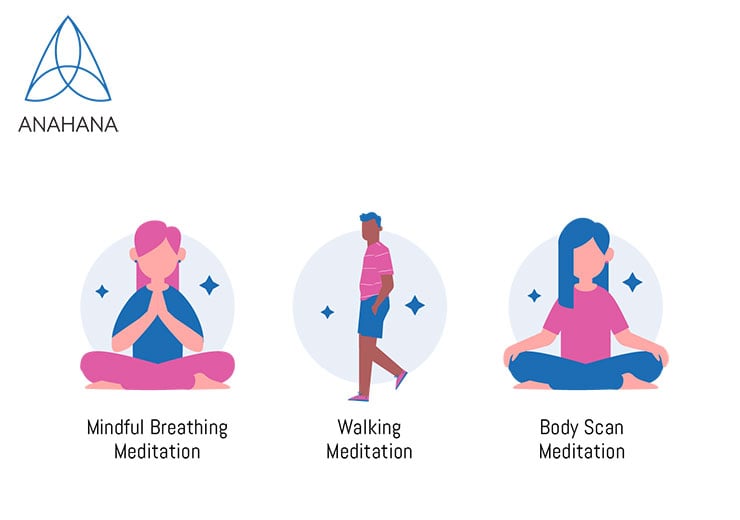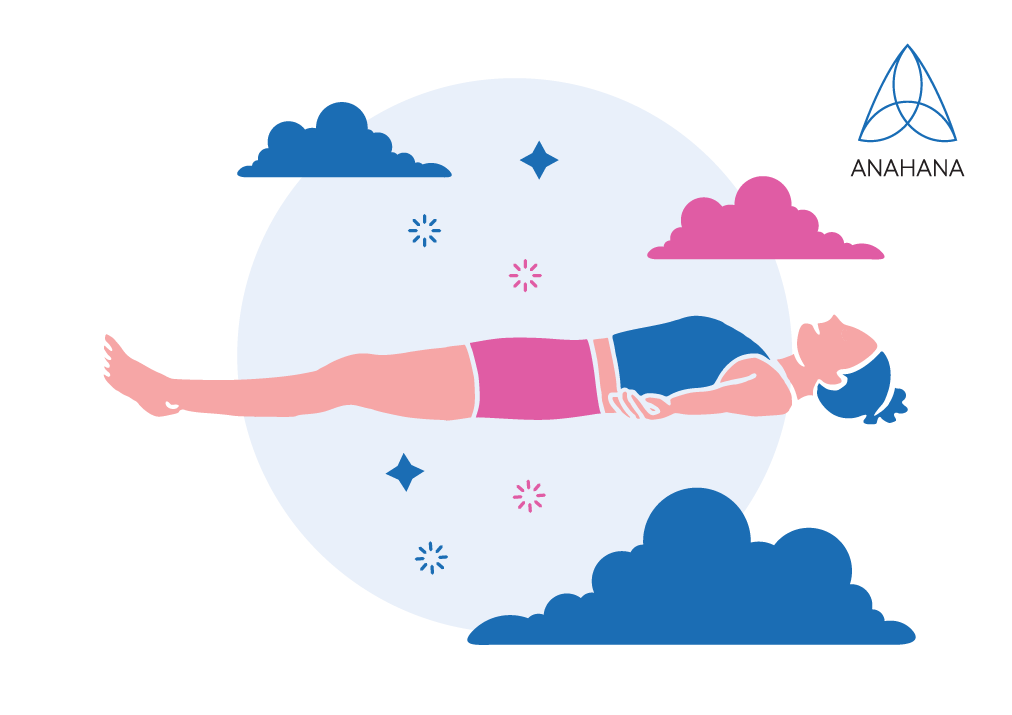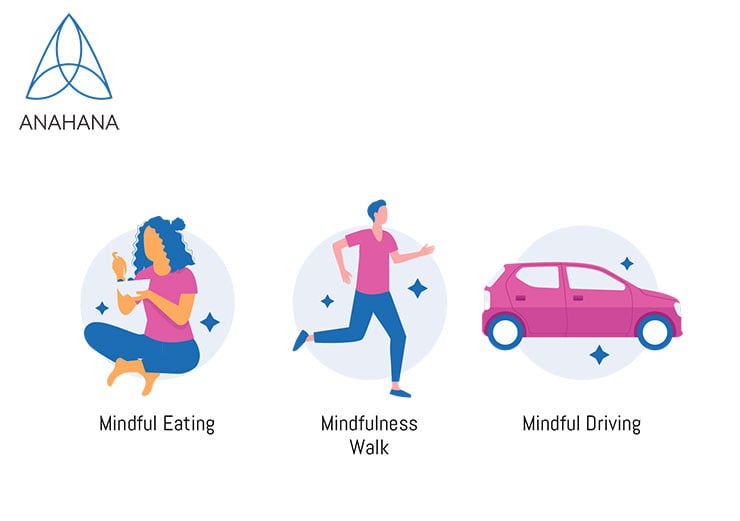
Table of Contents
Mindfulness is a type of meditation wherein the practitioner tunes in to how they feel. Shifting awareness to the body and acknowledging what emotions and physical sensations are present without judgment allows us to live in a more mindful state. Some mindfulness practices often involve guided imagery, breathing, and other meditative practices.
The Benefits of Mindfulness Meditation
 Behavior research and therapy have confirmed that the benefits of mindfulness exercises are extensive. Most people live on auto-pilot and struggle to be fully present. Through mindfulness meditation, people can live in the present moment with mindful awareness. Being more aware can help people slow down, pay attention, and notice things in the busy world.
Behavior research and therapy have confirmed that the benefits of mindfulness exercises are extensive. Most people live on auto-pilot and struggle to be fully present. Through mindfulness meditation, people can live in the present moment with mindful awareness. Being more aware can help people slow down, pay attention, and notice things in the busy world.
Mental benefits
-
Improves well-being
-
Reduces negative thoughts
-
Enhances self-compassion
-
Regulates addictive behaviors
-
Calms the nervous system
-
Reduces anxiety and depression
-
Regulates emotions
Physical benefits
-
Treats insomnia
-
Reduces high blood pressure
-
Relieves chronic pain
Practicing mindfulness exercises allows one to live in the present moment. Additionally, it gives practitioners power in the way they feel about managing overwhelming emotions and the ability to cope during difficult moments.
Through practicing mindfulness meditation daily, people can reduce stress levels, which creates room for new patterns of thought. Further, it supports confidence, which encourages creating and sharing new ideas.
Types of Mindfulness Meditation Exercises
 There are many different exercises and variations of mindfulness meditation. Three of the most widely practiced simple mindfulness techniques include mindful breathing meditation, walking meditation, and body scan meditation. Throughout each practice, the mind may wander. Allow these thoughts and emotions to rise and fall and shift one’s focus back to the exercise.
There are many different exercises and variations of mindfulness meditation. Three of the most widely practiced simple mindfulness techniques include mindful breathing meditation, walking meditation, and body scan meditation. Throughout each practice, the mind may wander. Allow these thoughts and emotions to rise and fall and shift one’s focus back to the exercise.
Mindful Breathing Meditation
This meditation exercise incorporates deep breathing to instantly relieve stress and clear the mind. Begin by finding a tranquil space and preparing for the practice.
-
Begin sitting in a comfortable position.
-
Slow the breathing and tune into the breath.
-
As the mind wanders or takes notice of sounds coming from the next room, be patient and gently bring it back to focusing on the breath.
-
Stay here for five to seven minutes.
-
Slowly open your eyes and continue with the day.
Walking Meditation
This exercise consists of walking in a repetitive motion and focusing on the body’s senses.
-
Find an open space that has room for you to move freely.
-
Take ten to twenty steps forward, moving slower than your average pace.
-
Turn around once complete, and repeat the same number of steps back.
-
Throughout the mindfulness practice, be aware of any physical sensations that arise in the body (legs, arms, face). Focus your awareness on the emotions and sounds created by your steps. Participate in mindful listening if you please.
-
Repeat this practice for ten to twenty minutes.
Body Scan Meditation
Body scan meditation practice is an effective mindfulness-based stress reduction technique. It has the practitioner involve themselves in the present moment and complete a scan and sense the entire body.
-
Begin by sitting down or lying comfortably on the floor.
-
Take a few deep breaths to ground yourself and fully immerse in the moment.
-
Move your attention through the body. Begin at your toes and work your way up, or start at your head and work your way down.
-
Take time to focus on an individual body part, exposing lingering sensations.
-
If your mind wanders, approach this with non-judgment. Allow your thoughts to rise and fall of their own accord and shift your focus back to the body.
-
When the scan is complete, take a moment to acknowledge your body as a whole.

On-The-Go Mindfulness Activities
Not everyone has the time to practice simple mindfulness exercises every day. However, these simple practices make this possible. Our daily routine usually involves eating, walking, and driving; therefore, doing so mindfully is an easy and accessible way to incorporate mindfulness.
Mindful Eating
In our busy world, we often pay little attention to the food we consume. Mindful eating is how we buy, prepare, serve, and consume foods. It allows one to make more mindful-eating choices, steering people toward a Mediterranean diet (fruits, whole grains, vegetables, seeds, vegetable oils, nuts) rather than a fast-food one. Here are several practices recommended by Harvard Health that support mindful eating:
-
When making your weekly shopping list, consider the health value of each item. Try to focus on filling your cart with mainly produce.
-
Ensure that you have an appetite but are not overly hungry when you sit down for a meal. Make sure you can focus on enjoying each bite of your food.
-
Rather than overloading your plate, begin with small portions.
-
Before you begin eating, take a moment to appreciate and express gratitude for your food and the people you enjoy it with.
-
Bring all five senses to the meal. Pay attention to the color, texture, sounds, and other qualities of the food as you prepare and eat the meal. Pay even more attention to the five senses when eating your next meal.
-
While you eat, take small bites to taste the food completely.
-
Chew each bite thoroughly to release all of the flavors hidden in the dish.
-
Devote around five minutes of mindful eating to the meal before you begin chatting with your tablemates.
Mindfulness Walk
Walking is a habituated action that requires minimal concentration, making it a great mindfulness exercise. Whether you are on your way running an errand or taking the dog for a walk, it is a simple exercise that you can practice in your daily life.
-
As you walk, take notice of how your body feels.
-
Next, notice things that are going on around you (e.g., cars, people, wind, etc.).
-
Then, participate in mindful listening by turning your attention to sounds and acknowledging what you can hear.
-
Next, turn your attention to smells. Some may be pleasant, while others may be unpleasant.
-
As you continue walking, notice as these things enter your field of awareness.
-
Once satisfied with your senses, shift your attention to the sensation of movement in the body. Use these physical sensations as a grounding point for the mind.
-
Continue your mindful walk for as long as necessary.

Mindful Driving
The last exercise we will introduce to you is mindful driving. This is an accessible mindfulness practice that can be used during the daily commute to work, while driving to run errands, or while driving alone anytime. It is a great way to incorporate mindfulness into everyday life and reduce stress from the day.
-
Take a deep breath.
-
Remove all noise, such as music, audiobooks, or the radio.
-
While you drive, tune into your surroundings and be aware of your surroundings.
-
Develop some simple mindfulness exercises that you will repeat in your drive. This may be taking a deep breath at each full stop or rewarding yourself for practicing mindfulness with a coffee.
Whichever mindfulness exercise you choose to practice, savor each breath, sensation, and thought in your lower brain centers. Each moment is a doorway to obtaining a more exceptional state of well-being.
Frequently Asked Questions
How to practice mindfulness at home?
Depending on your living situation, your home may not be the most accessible place to immerse yourself in mindfulness fully. If you live with a partner, roommates, or kids, ask them for a few minutes of alone time and prepare in advance for the practice.
You must pick a convenient time and comfortable space. Try to dedicate a time of the day for mindfulness and free the physical space you wish to practice the exercise from all distractions. If you have trouble being motivated and maintaining focus, guided meditation is an easy way to begin.
What are the five mindful exercises?
There are far more than five mindful exercises. However, many people consider the following exercises as the primary mindfulness exercises:
-
Mindful appreciation
-
Mindful observation
-
Mindful listening
-
Mindful awareness
How to practice mindfulness every day?
Practicing mindfulness and tuning into the present moment every day is vital to gaining many life improvements. People often move from one task to the next and take little time to pause and take a breath. This makes it easy for people to forget to incorporate mindfulness into their lives. You can encourage mindfulness by integrating it into daily activities like driving, walking, or folding laundry. Additionally, reserving a time of day to be in the current moment can be effective.
References
Mindfulness exercises - Mayo Clinic
Mindfulness Meditation and Psychopathology

By: Anahana
The Anahana team of researchers, writers, topic experts, and computer scientists come together worldwide to create educational and practical wellbeing articles, courses, and technology. Experienced professionals in mental and physical health, meditation, yoga, pilates, and many other fields collaborate to make complex topics easy to understand. Anahana is also home to specialists in crystals, tarot, angel numbers, astrology, life path numbers, zodiac signs, and horoscopes. By combining evidence-based wellness with spiritual and energetic practices, the team offers clear, trustworthy guidance for both mind-body health and modern spirituality.